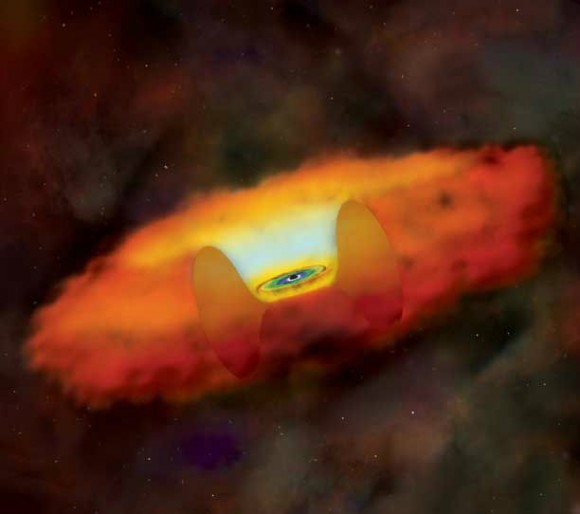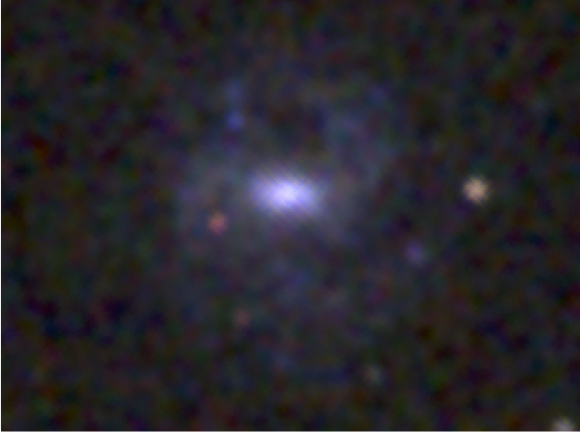
Astronomers have found the smallest black hole ever observed in the center of dwarf galaxy RGG 118 – 340 million light years from Earth. At just 50,000 times the mass of the sun, the black hole is more than two times smaller than any other known object of its kind. It’s a full 100,000 times less massive than the largest black holes at the heart of other galaxies.
Elena Gallo, University of Michigan assistant professor of astronomy, said:
In a sense, it’s a teeny supermassive black hole.
Black holes come in two types. The stellar mass variety have the mass of several suns. They form when the largest stars die and collapse. The other supermassive kind is typically at least 100,000 times the mass of the sun (the newly found one is half that). These are thought to form and evolve with the host galaxies whose centers they inhabit.
Every large galaxy, including our own Milky Way, is believed to have a supermassive black hole at its core. The recently discovered object is one of the first to be identified in a dwarf galaxy.
The findings illuminate for astronomers important similarities between galaxies of vastly different scales. And because galaxy RGG 118 is so small, it’s unlikely that it has ever merged with other galaxies, so it gives researchers a window to a younger universe. Larger galaxies are thought to have grown through mergers.
A paper on the results was published on August 11, 2015 in Astrophysical Journal Letters. Vivienne Baldassare is the paper’s first author. She said:
These little galaxies can serve as analogs to galaxies in the earlier universe. For galaxies like our Milky Way, we don’t know what it was like in its youth.
By studying how galaxies like this one are growing and feeding their black holes and how the two are influencing each other, we could gain a better understanding of how galaxies were forming in the early universe.

As is the case in most present-day galaxies, the Milky Way’s black hole is dormant. Young or small galaxies like RGG 118 have active nuclei that are still in the process of swallowing stars, dust and gas. During this tumultuous time in galaxies’ history, the central black hole helps to shape its host’s evolution. It acts as a thermostat, Gallo described, regulating both the temperature of the galaxy and the movement of the dust and gases that form stars. Baldassare said:
The black hole we found is active and based on the X-ray observations, it appears to be is consuming material at a rate similar to active black holes in much more massive galaxies.
Astronomers don’t yet understand how supermassive black holes form. Some hypothesize that giant clouds of gas serve as their seeds. Others believe they descend from gargantuan stars about 100 times the mass of the sun. Gallo said:
We have two main ideas for how these supermassive black holes are born. This black hole in RGG 118 is serving as a proxy for those in the very early universe and ultimately may help us decide which of the two is right.
Enjoying EarthSky? Sign up for our free daily newsletter today!
Bottom line: Astronomers have found the smallest black hole ever observed in the center of dwarf galaxy RGG 118 – 340 million light years from Earth.











